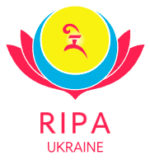The Monastery in Orissa
China invaded Tibet in 1949 and His Holiness the Dalai Lama was forced to flee his country in 1959. After a harrowing journey across the Himalayas, His Holiness, along with some 100,000 Tibetan refugees who followed after him, finally arrived safely in India. While facilitating the creation of a new Tibetan government in exile in Dharamsala, the Indian government led by Pandit Jawaharlal Nehru launched a major rehabilitation program, assigning the Tibetan Refugee communities that were fleeing Tibet in mass exodus, to various sites across the country of India.
The Tibetan Phuntsokling site was founded in 1963, as one of these communities, near the remote tribal village of Chandragiri in Gajapati District (South Orissa ). Initially, the population numbered 500 people, including His Eminence Namkha Drimed Rabjam Rinpoche and his communities that came from both Kham and Pemakoe. Since its inception, the Phuntsokling site has continued to grow. There are now several camps housing thousands of refugees.
Thupten Mindrolling monastery was founded in the mid-1980s under the vision and guidance of the Terton, His Eminence Namkha Drimed Rabjam Rinpoche, and subsequently inaugurated by His Holiness the Dalai Lama. Therefore, the monastery became a center dedicated to the spiritual activities and the survival of the precious ancestral wisdom of Tibet and of Vajrayana Buddhism. The monastic community includes monks and novices. According to ancestral values, the lay community, participates harmoniously in the life of the monastic community during practice.
In 1998, His Holiness the Dalai Lama laid the foundation stone which symbolized the expansion of the monastery to house a larger monastic community. To contribute to the realization of this project, efforts to raise funds programs were launched.
In 2010, the work was completed and His Holiness the Dalai Lama inaugurated the new Thupten Mindrolling monastery. The limited resources of the camps are based largely on agriculture and raising livestock during the summer monsoon, and are supplemented by the proceeds of the sale of textiles, when traveling to the neighboring states of Orissa in winter. The camps also feature a craft center which mainly produces traditional Tibetan rugs, incense, traditional paintings called thangkas and ritual objects .
In each camp, people choose their own leaders through democratic elections. They are responsible to the Representative Office, Department of Homes, CTA Dharamsala.
 english
english  українська
українська 